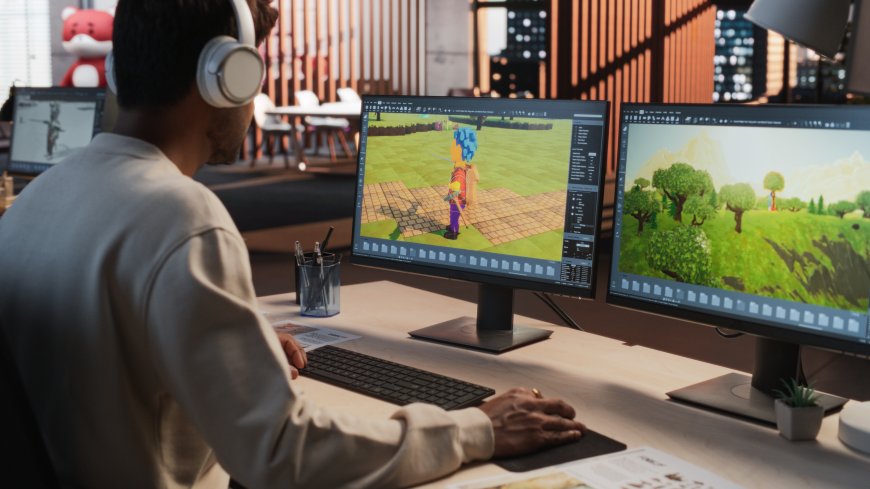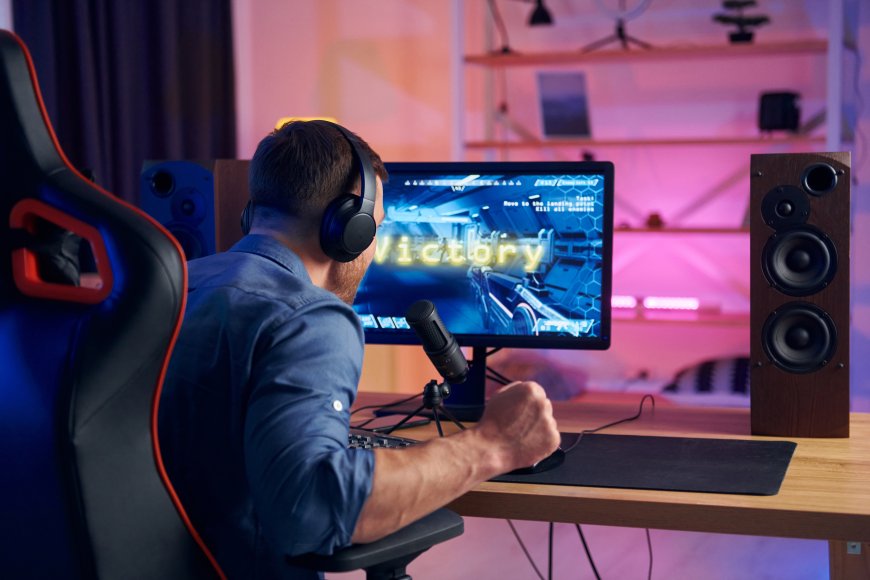The Indie Game that Stole the Show: Which Small Title Defined the Gaming Vibe of 2025?
A detailed look at the indie game that unexpectedly dominated 2025, reshaping gaming trends, influencing developers, and capturing global player attention.

The gaming industry, every year, looks forward to massive AAA studios to deliver big things. But at the same time, it is the small and audacious teams that every year manage to produce an excellent game. Such is the case with indie games, which not only sell well but also influence the cultural dialogue. They set a "vibe" that is being discussed by all the streamers, critics, and casual players.
2025 was supposed to be the year of the long-awaited sequels, the massive budget titles, and the predictable multiplayer shooters. We were ready for the big show. Instead, the spotlight was stolen by a tiny, atmospheric title that came out of nowhere: "Stellar Drift."
The State of Indie Games in 2025: A Landscape of Hyper-Innovation
Before the announcement of the winner, it is crucial to know the battlefield. The indie video game market is a place of fierce competition with many new comers entering the market. Moreover, the game should no longer be limited to having a retro pixel art style or a roguelike mechanic to be successful. It must come with a hook—a true innovation that attracts users’ attention to the point of stopping their scrolling.
Recently, the major victories have been of those games that have combined genres in surprising ways or have been strictly devoted to social gaming.

The Viral Co-op Effect
Games like Lethal Company proved that simple graphics and complex social dynamics could create a streaming phenomenon. Similarly, the continued rise of unique indie horror games showed that small teams could create genuine fear and comedy with low-fi aesthetics.
The Power of the Niche
Titles like Balatro, a deck-building poker rogue-lite, achieved massive sales by mastering an extremely specific, addictive formula. These kinds of popular indie games showed the industry that mechanical depth can beat high-fidelity graphics every time.
In 2025, the challenge was higher than ever. Players were tired of simple copies. They demanded authenticity and a reason to invest their time.
Introducing Stellar Drift: The Accidental Blockbuster
The game "Stellar Drift" was concocted by a small studio consisting of three people situated in Helsinki, Finland. At first glance, it seemed to be a relaxing, low-poly space exploration game. Besides that, it had a not so difficult and quite original premise: a lone surveyor was mapping a galaxy undergoing a seven-day time loop.
The game neither offered fast-paced action thrills nor was it a tedious resource-management game. Its genius lay in its narrative structure and its incredible respect for the player's time—a major trend for the year, according to industry analysis (Source: The Google Play 2025 Indie Game Trends Report).
The plot was a deeply moving psychological puzzle. You spent the week exploring different planets, helping procedurally generated alien communities, and slowly gathering clues about the “Drift” that reset time. The magic? Your progress was mostly tied to knowledge, not collected items. Dying or running out of time meant a reset, but your protagonist always retained their memories and journal entries. This little adjustment allowed all setbacks to be regarded as progress instead of setbacks. The assurance of the narrative and emotive aspects put it right amongst the greatest indigenous titles of its genre and recalled the emotional intensity of previous successes such as Outer Wilds and Spiritfarer.
What Made Stellar Drift the Defining Indie Video Game of the Year?
The “vibe” of 2025 was not about speed; it was about contemplation and shared mystery.
The Streamer Phenomenon: Solving the Puzzle Together
“Stellar Drift” was not a single scare or a crazy physics engine that made it a viral hit, but rather the fact that it was the ideal co-op spectator sport, although it was single-player. The spectators were not merely sitting to see the game; they were assisting in its solving.
Streamers like CaseOh_ and others who focus on community interaction found gold. The game's in-world puzzles and subtle narrative hints were complex enough that no single person could solve them quickly. This led to hundreds of thousands of viewers working together in live chat to compare journal entries and map layouts, effectively turning the single-player experience into a massive, global co-op event.
This shared, collective experience—a phenomenon also seen in past titles like Among Us and Phasmophobia—was the engine that drove "Stellar Drift" to over 5 million copies sold in its first two months.
A Return to Low-Stakes, High-Emotion Design
While many developers focused on creating the next highly replayable roguelike, "Stellar Drift" emphasized finality and meaning.
It offered a profound counterpoint to the more relentless and terrifying world of indie horror games, where fear and stress are the main mechanics. Instead, "Stellar Drift" was quietly intense. The time constraint was not an anxiety-inducing factor, but rather a mild encouragement to utilize the complete cycle optimally. The so-called "cozy mystery" genre quickly gained huge popularity because it provided gamers with a space to contemplate, empathize, and interact devoid of the continual, pressure-filled demands of a regular AAA game. It was the "cozy sim" developed further, admitting that chill mechanics could underpin a mature, serious tale.
Beyond the Hype: Stellar Drift's Legacy and The New Trend
The success of Stellar Drift didn't just make its creators rich; it shifted the creative focus for dozens of small studios.
Its legacy is threefold:
The Rise of Knowledge-as-Progression
We saw an immediate surge in development for games where the player's knowledge, not their inventory, was the key resource. This validated experimental design over traditional leveling systems.
Narrative as Co-op
The industry realized that a single-player game could still foster massive, real-time community collaboration. This new model is now being studied by studios of all sizes.
Artistic Authority
In a year where big studios struggled with AI-generated art, "Stellar Drift's" deeply stylized, hand-crafted visuals stood out. It reinforced the idea that unique artistic vision will always trump technical photo-realism in the indie games space. The quality of the final product, the authenticity behind the design, and the dedication to a unique player experience defined what it meant to be one of the best indie games in 2025.

The Next Chapter for Small Studios
So, what does the victory of "Stellar Drift" imply for 2026 and the years to come? It attests to the fact that the indie video games which get the widest acceptance are often the ones that cannot be classified easily. These games take a leap of faith on a mechanical or thematic combination—like merging a relaxing simulator with a time-loop puzzle—and, most importantly, are conceived with the streaming community in mind. The next cultural phenomenon is already being sought. It won't be a copy of Stellar Drift, nor will it be another one of those indie horror games that rely on giving easy scares and are already in a long line. It will be the one that spots the change in the collective player mood first, creating a new cultural moment through sheer, unexpected brilliance.
What's Your Reaction?
 Like
0
Like
0
 Dislike
0
Dislike
0
 Love
0
Love
0
 Funny
0
Funny
0
 Angry
0
Angry
0
 Sad
0
Sad
0
 Wow
0
Wow
0



























































































































































































